Posted in N&V
RVM: Strategy and the Future
By Bob Buddemeier
The opinions expressed in this article are those of the author, and do not necessarily reflect those of any other individuals or organizations.
Introduction
On June 21st Executive Director Dave Keaton made a presentation on Strategic Planning at, and for, RVM. A video recording of that presentation is available at https://retirement.app.box.com/s/x3ukx66ntcsx6rv2uprq8wu11joto3kq. If you have not seen it and did not attend the meeting, and if you are even slightly interested in the future of RVM as a business and as a community, I recommend that you watch it.
I have been an administration-watcher over the course of my eight years (and three administrations) at RVM, and this was the most encouraging presentation I have seen in that time. It was a timely and informative report on an activity that involved RVM and PRS administrators and RVM residents working together to develop an essential product – the Strategic Plan. Connie Kent has interviewed Dave Keaton and written an article about the planning process that will appear in the next issue of hillTopics.
I see this as an excellent first step. A financially-oriented management plan provides a practical, quantitative basis for for exerting control over future developments. However, the institution is much more than just its bottom line, and I think there need to be jointly developed and implemented “strategic plans” addressing and integrating the many other aspects of RVM that make it a desirable retirement residence – and therefore a viable enterprise. This article presents some thoughts on implementation of the plan and on implications for RVM residents – and some suggestions about additional needs, opportunities, and procedures.
About the Plan:
The plan consists of 13 initiatives, some subdivided into phases or subcategories. Presentation slides describing the initiatives, plus figures showing priorities and schedules, can be viewed or downloaded at this URL: https://thecomplement.info/wp-content/uploads/2023/07/Strategic-Planning-slides.pdf. Dave described it as a “rolling” three-year plan; he didn’t define that, but I assume that means that the planning process will be revisited as the initial objectives are completed.
The figure below is one of the presentation slides that provides titles and timelines of the initiatives.

Observations based on available information
RVM Resident demographics: Initiative 7 targets the Rogue Valley as the intended primary market, Initiative 8 identifies CA and HI as secondary markets, and Initiative 9 addresses recruitment of residents whose financial resources don’t match current RVM contracts (a topic related to Initiative 3, concerning how to fill Manor apartment vacancies).
Changes in the origins and financial status of incoming residents may have an impact on the RVM community. If a larger fraction of new residents comes from the local area:
- It could strengthen efforts under initiative 11 to build more extensive relationships between RVM and local entities;
- It could complicate building a patient base for the clinic if more people arrive with local medical arrangements already in place; and
- It might reduce on-site volunteerism and/or Foundation donations if incoming residents maintain their local charitable or organizational commitments (or if their net worth is lower than has been the case in the past).
Health Care Planning: Initiative 4, which is divided into 4 subcomponents, addresses business and expansion plans for the existing licensed facilities and for Home Care and Residential Living as well. These are very welcome developments, but there are some closely related issues that I hope are being considered concurrently:
- How will these developments tie in with the clinic in terms of staffing, facilities, services, and funding?
- Is there potential for addition of a pharmacy connection (perhaps through Initiative 11 rather than as an on-campus stand-alone)?
- Can we assume that the Manor Mart will continue to serve as a source of OTC and personal health supplies?
- Is management of access to, and transitions between, programs or facilities being reviewed or planned? There have been some problems associated with transitions from hospital to the Health Center and/or Home Care.
Financial Planning – and implications: Initiative 5 and 6 (Capital Budget and Labor Retention) are much-needed developments to provide stability and predictability of operations. However, it seems to me that we need to also be planning for maintaining quality of life in the face of rising expenses.
- Requirements for a capital reserve fund will need to be reviewed almost continuously, in view of the recent history of shortages and inflation. I suspect that the fund will require substantial input before it comes close to steady-state maintenance.
- Employee retention efforts will be costly in terms of benefits and salaries – a necessary cost, but more than we are currently spending.
- Sustainability (Initiative 13) improvement may result in cost savings if we can reduce use of expensive resources, but that depends on acceptance of changes by existing and expected new community members. Maintaining the status quo will become increasingly expensive.
Tentative Conclusions:
In my opinion, the Strategic Plan presented provides a satisfactory initial approach to building long term stability for RVM if:
- It is the beginning of an ongoing process;
- There are mechanisms for identifying and making changes as needed; and
- There is ongoing success in recruiting a resident body that will not only pay the bills, but also participate in maintaining a community that adds value beyond that provided by facilities and staffing.
Suggestions:
With respect to the three conditions stated under Tentative Conclusions (above):
- Establish an annual process in which the overall plan and its individual components are reviewed for continued validity of the original assumptions and inputs, and for the achievement of desired progress or goals (see item 2).
- At the point of implementation, plans should include measurable criteria for success or desired outcomes, which should be evaluated in each review. Failure to achieve expected goals should result in prompt reconsideration.
- Community strength is critically important, but challenging to achieve or measure.
- With a greater emphasis on a local primary market and a growing number of locally recruited residents, opinions of prospective residents are likely to be influenced by much more than marketing initiatives. Effective, objective surveys of opinions within the RVM community and the larger market community will be desirable, with effective responses to, or uses of, the findings.
- In my opinion, the resident body is somewhat similar to the physical infrastructure – a diverse collection of entities with a wide range of uses, conditions, importance, and replacement values. However, I feel that the usual approach is to “manage” it without the depth of understanding that is being developed for the physical infrastructure under Initiative 5. A clearer view of who is here, why, and what they are getting out of or putting into the community would permit much more effectively targeted marketing and retention.
- Residents provide a substantial number of the “quality of life” features that make RVM an attractive place to live. As staffing has been reduced, reliance on residents has increased, and particularly in leadership or organizational roles. Some of those roles reside in the Residents Council, with greater or lesser autonomy, but others operate directly under the Foundation, Wellness, or Community Engagement.
As well as individual committees, larger bodies such as the Library, the Residents Preparedness Group, and the Art Committee provide highly desirable services that would not be available if staff needed to be the source.
As we move toward a model of a (probably smaller) body of more experienced staff, I think that we need to find ways to shore up the critical volunteer infrastructure. Modeling on the successful approach used by the Foundation, this might be done by having each major activity affiliated with a senior staff member or Department, so that there would be a person with authority and access to resources who could step in and assist if organizational or leadership problems arose.
I see this not as a blending of roles or a takeover of responsibilities, but as a recognition of mutual dependency and the need to sustain each other in the interests of our common well-being.
The Complement wishes to support RVM and the resident community in developing and implementing a truly comprehensive Strategic Plan. We welcome your comments and invite submission of relevant letters or articles.
Bill Anderson: A Man Prepared for Emergencies
By Joni Johnson

Bill Anderson
Bill Anderson is known as the Tesla guy here on campus. While a number of people have Teslas, Bill has had at least five. And his love for his Tesla is a testament for how he sees it keeping him prepared for Emergencies. But his Tesla is only one of the many marvelous gadgets he has for being prepared for emergencies.
Bill has been involved in Emergency Preparedness since a teenager. He told me how, as a young boy in Fargo, North Dakota, he was commandeered as a ham radio operator to communicate between train dispatchers during a raging blizzard. The snow was piled so high that there was absolutely no transportation moving within a 50 mile radius of Fargo. He agreed to help the two major railroad dispatchers. He was taken to an undisclosed location, and for one week, he slept on the floor and ate sandwiches so that using his ham radio equipment, he could help the train dispatchers talk to each other.
That experience started him on a life-long interest in emergency preparedness. When he arrived at RVM in 2008 he realized that even though the Manor would do all it could to ensure his safety, it really was each man for himself in terms of complete readiness. What would happen in a fire? What if an earthquake closed down Highway 5 and/or his house was destroyed? He realized he wanted to protect himself and his wife as much as he could.
But Bill has formulated a longer list to protect himself in a variety of emergency situations. His question was, What would he need that quite possibly might not be available from the Manor during a fire evacuation or an earthquake? The four major items are power, water, food and transportation.
POWER
During our interview, Bill and I spent the next hour discussing his wonderful array of gadgets and how they would work in an emergency. I first met Bill when I did an article on emergency generators. Many generators are gas powered, and gasoline storage isn’t allowed at RVM. He has two Jackery 1500s. These are high-capacity portable battery systems that can be charged with solar panels or electricity. These would allow him to keep his house well lit and his refrigerator going in case of a blackout. He also has the solar cells that would keep the batteries juiced up in case of a long power outage.
I was looking for options for myself and my husband, Tom. Tom used a portable oxygen concentrator and needed a way to recharge its batteries in case of an emergency power outage. Two hours of no power would be fine, but much longer could be a disaster. And while the Manor and Plaza have emergency generators, Tom would have had to sit in chair near the power outlet for as long as the power outage lasted. That would not have been very practical. We decided on a Jackery 1000 with solar panels that cost about $1500. It was the largest electric power source that I personally could easily move from place to place. With an extra set of concentrator batteries and a battery charger, this would allow Tom to recharge his batteries over and over again. It addition, it would power the TV and some light sources. The refrigerator would have required too much wattage. The larger Jackery would have taken care of that. This link is to an article written for The Complement comparing a variety of battery powered sources.
https://thecomplement.info/2021/09/30/emergency-power-at-home-why-what-and-how/
Anyone living in the Plaza, Terrace and Manor doesn’t have to go anywhere during a fire. They can shelter in place in their apartment. However, even though the high-rises have generators, those would mostly light up the hallways and not provide power to each apartment. So a power outage is something to consider, since it would shut down light and most communication channels campus-wide as well as heating and cooling in the cottages. Other than possible power outages, those in cottages should be fine unless there is imminent danger. RVM has plans for helping people in cottages who are seriously threatened by fire to get to the Plaza or the Manor. This will be on a street-by-street basis.
So Tom and I felt fairly safe in case of an extended power outage. And Bill was an enormous help in making a decision about what to buy.
WATER
Safe drinking water and food are clearly high on the list. Bill has boxes of water and food to last for several weeks that he bought off the internet from a company named Patriot. But you need room for that. I don’t have it in my two-bedroom cottage. However, Manor security has a number of emergency kits that would provide food, medical supplies, mylar blankets and many other items – including a small amount of water — for short term use. I bought several of these. The cost for these kits ranges from $42.99 to $139.99. Go to https://files.mwapp.net/FILES/105136059.pdf. RVM will charge your account and the kits show up on your doorstep.
TRANSPORTATION
Bill loves his Tesla model Y because he can charge it from his Jackery batteries and in case of a gasoline shortage, he could still get in his car and leave. In addition, because it is an SUV, he can sleep in the car if necessary. During the Almeda fire, Bill headed out to the Expo with his Tesla, a mattress for the car and food and water. All was well. For more information on this model Tesla, go to https://www.tesla.com/modely
FOOD
Bill has enough freeze-dried long lasting food to last him for a month or more. He bought his from Patriot as well. Costco often has packages, and all camping stores have freeze dried food. In the emergency kit mention above, there are enough food bars to last for several days.
Bill’s love of his Tesla and his plans to use it in case of a major emergency that would let him travel farther away is great. But many of us do not have Teslas, or even cars, for that matter. However, some of Bill’s gadgets could certainly be useful.
In addition to food, water and a mattress, Bill has the following at his fingertips (all of which can fit in his car in case he has to leave). Some of these could be useful, even if you plan to stay at RVM. I’ve starred (*) those. Items with double stars (**) would require high capacity storage batteries or solar panels for use.

Sun Powered Thermos
* water filter
* Sun powered thermos
* Solar cells for phones
* Lanterns
** portable refrigerator/freezer by Bodega
** small electric frying pan
tent and tent mattress just in case he doesn’t want to sleep in his car
biolite camping stove
folding camping table
Fire is one thing. In case of an earthquake, there are many other factors to consider. You need to decide what items will be required to keep you safe and somewhat comfortable for at least a week without utilities (electricity, gas, running water, sewer), or access to shopping. Everyone’s situation is different in detail, but you can find general advice on personal emergency preparedness by looking at the Emergency Preparedness list as part of the link on MyRvm mentioned above.
Bill is ready for whatever emergency, come what may. If any of you camp, you may already have many of these items. If not, Amazon, Bimart or Big Lots are at your command. It is wise to be prepared. One never knows. Thank you Bill!
Bemused Birding
by Bob Buddemeier, with Anne Newins
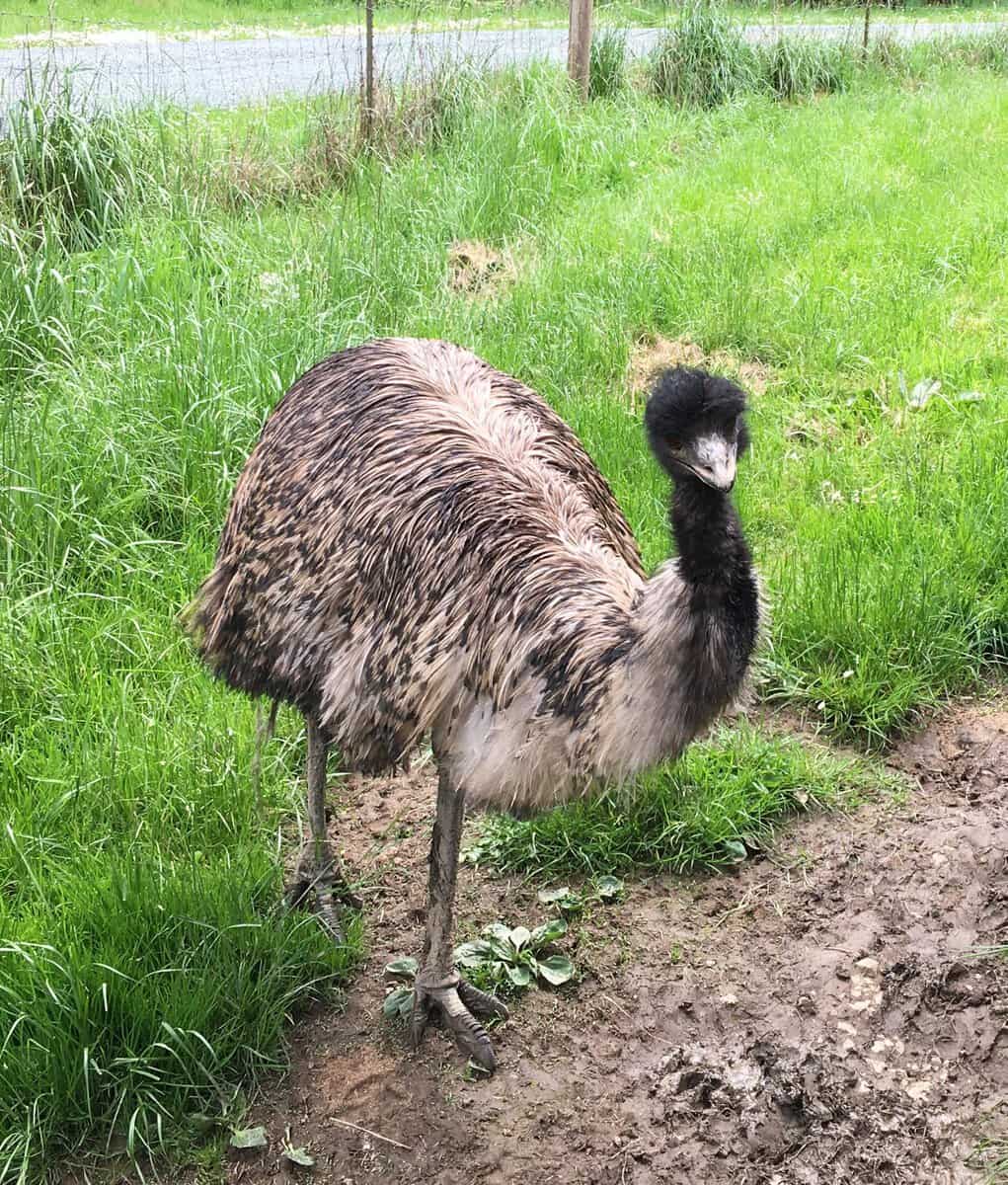
Hemu the emu poses for his admirers
Anne Newins is known to Complement readers for her library displays and book reviews (see the current issue’s Arts & Info section). However, her interests are not limited to the literary-artistic; she is also a dedicated gardener and birder (see birding article at https://thecomplement.info/2022/07/03/birders-take-flight-at-rvm/). In the latter role she has agreed to contribute to our “Critter” issue, and this is a brief account of her recent experience on a visit to new acquaintances Nancy and Jim on their rural property in Coos County.
Nancy is also a birder (and a 3-horse, 3-dog critter person), and arguably an overachiever in the category. Among her livestock is Hemu (above right), the emu. The backstory: when she and her late husband moved to Oregon, they took their (then-young) children to a fair, where they bought a raffle ticket for two emu chicks. They won, and named the birds Hemu and Shemu. Emus have lifespans of 35 years in captivity, and as any parent could predict, the children did not take their pets with them when they left home.
Hemu is a bit shy, so Nancy, his emum, needed to provide guidance during the introductions (below). Hemu’s stepfather, Jim, opined that Hemu was shy in more ways than just socially: “See that big yellow eye? It’s larger than his brain.” Fortunately, intellectual companionship is usually not high on the list of reasons for keeping animals, and there were other rewards for keeping emus.
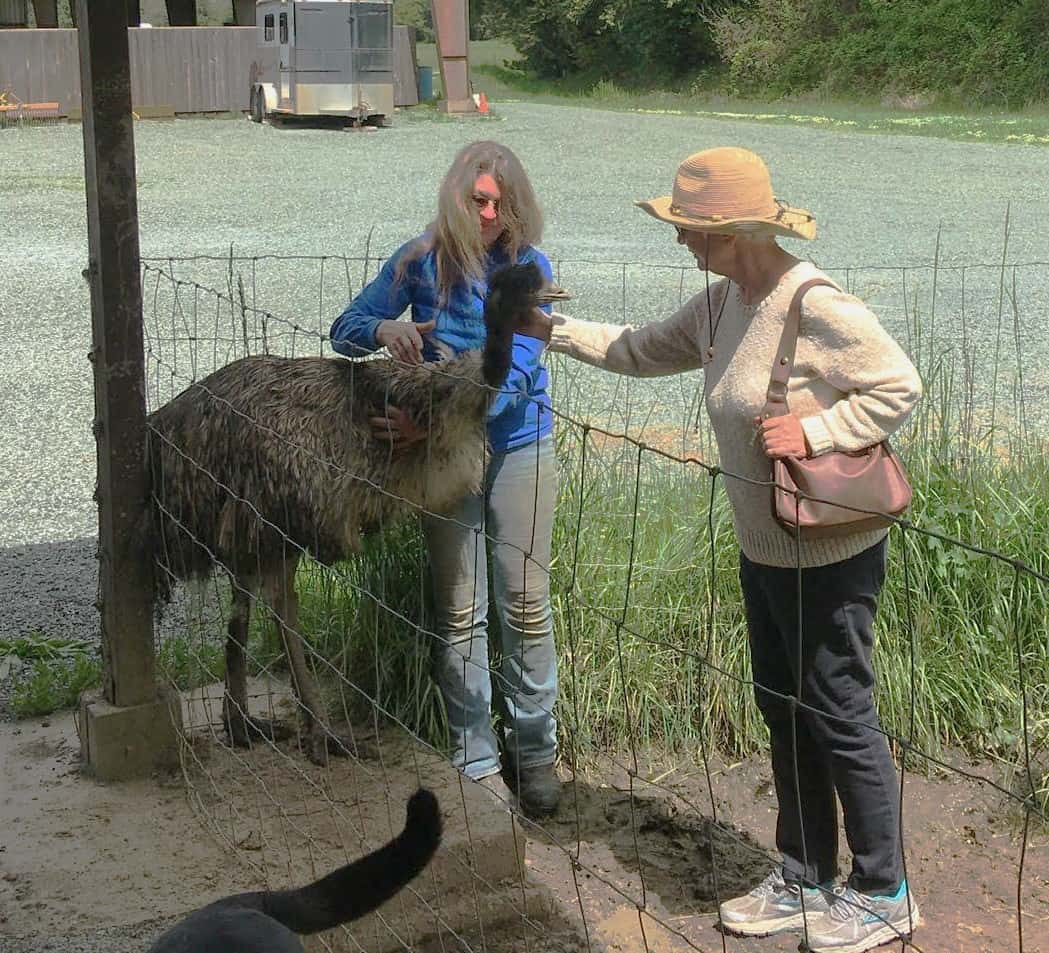
Bird and birders — L to R, Hemu, Nancy, and Anne.

Emu egg, with chicken eggs for scale
Before Shemu passed away at a regrettably young age, there had been a reasonable production of emu eggs. Nancy gifted Anne with an emu egg (shell), shown at left, and explained that there was a ready market for blown emu eggs — understandably, in view of their size and color. In terms of weight or volume, an emu egg is equivalent to 9-12 L or XL chicken eggs. The contents of one emu egg can produce a VERY large emulette, which Jim and Nancy assert tastes every bit as good as egg dishes made with more conventionally available ingredients.
Final thoughts for RVM (human) residents:
Consider our free-range avifauna that wander around campus when and where they please (see accompanying article by Robert Mumby). Consider what it would be like to have emus in that role. Does that evoke strong emutions?
Why doesn’t “emulate” mean “behave like an emu?” Or does it?
Thirst for knowledge not yet slaked? Try https://en.wikipedia.org/wiki/Emu
The Virginia Range Wild Horses
By George Yates
The Virginia Range is located in the Nevada high desert. It runs for some 30 miles north to south between Reno and Carson City, and spans of some 40 miles east to west. The area supports a substantial herd of wild horses (Figure 1); this article stems from our visit to the area for horse-watching and photography.

Figure 1: The wild horses are aware of our presence but are mostly habituated to humans. [ghy]
In 1955, Reno resident Velma Johnston, better known as “Wild Horse Annie”, led a movement to protest the ruthless manner in which wild horses were being rounded up by the Nevada Department of Wildlife for commercial purposes. The “Wild Horse Annie Act” was passed by Nevada in 1959. In 1971 the federal government followed suit, with the creation of the Wild Horse and Burro Protection Act of 1971. The Bureau of Land Management (BLM) protects and manages wild horses in balance with other public resource values on 177 herd management areas across 26.9 million acres of public lands. The Virginia Range is almost completely privately owned, so federal public lands management policies are not applicable. The Virginia Range mustangs are managed by the state of Nevada.
It has been over five centuries since the Spanish Mustangs arrived in North America, but they are technically a non-native species. The history of wild horses in North America has all the drama to be expected from any topic involving conflicting cultural, economic, and political interests. There is ongoing debate about whether the horses are indigenous or invasive; if they are wild or feral; or if they should be completely eradicated. Personally, I just like observing wildlife and taking their pictures.

Figure 2: The left panel shows behavior I try to avoid photographing – a horse grazing, which is what they mostly do. The two watching me photograph them quickly lost interest when they determined that I was not a threat. The right panel shows greeting behavior. [ghy]
Although the majority of the horses roam areas away from human settlements, this trip gave me a very different take on the Urban-Wildlife Interface. Horse bands are often seen wandering the streets of the small towns along Hwy 50 and are mostly welcomed by the residents. These animals are fully habituated to people.
We drove into a development and spotted a band of around a dozen horses meandering toward a house, so we ventured onto private property to observe their behavior. The homeowner was very welcoming; he told me that he and his wife had lived there for about 25 years and really enjoyed the wild horses.
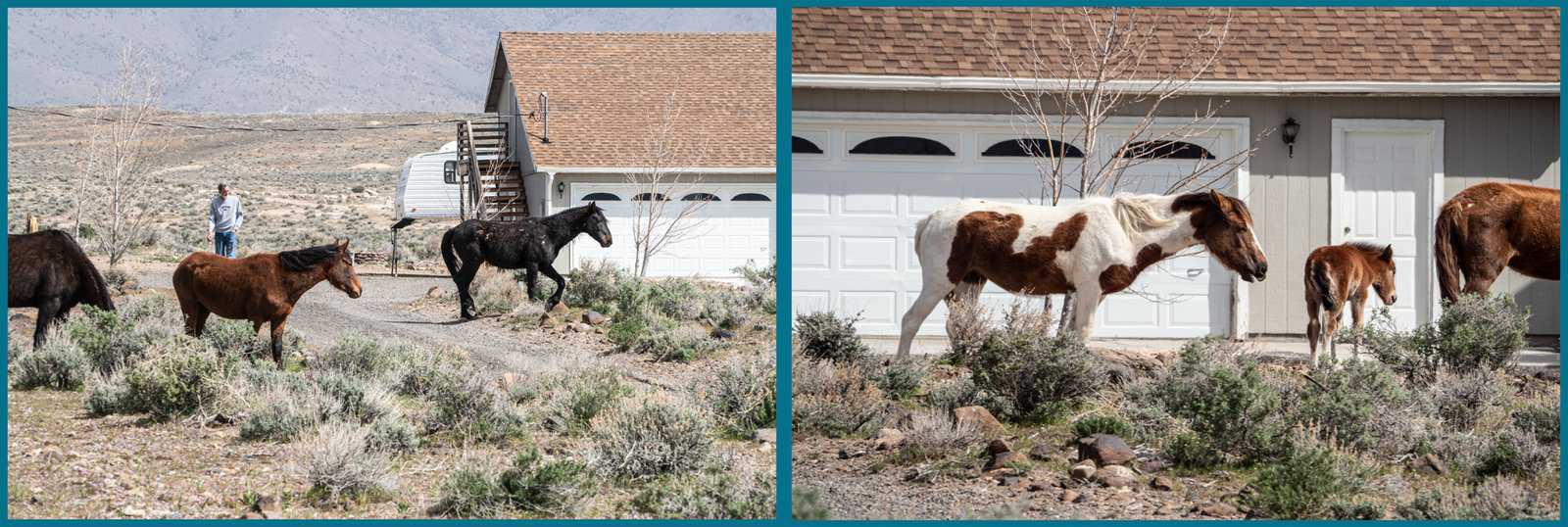
Figure 3: A small band of mustangs meandering in front of a home, completely ignoring the humans observing them. [ghy]
We watched the band stroll through the property(Figure 4), on their way to a water trough maintained by another homeowner. On the Virginia Range it is acceptable to put water out for these horses, but it is illegal to feed them.
The behavior of wild horses at water troughs is fascinating and I have observed it on at least two other occasions. There was already a band lined up to drink from the trough, each horse patiently waiting its turn. The band we were following simply queued up at the end of the line, as shown in Figure 5.

Figure 4: Left panel – on the way to water. Right pane – waiting a turn. [ghy]
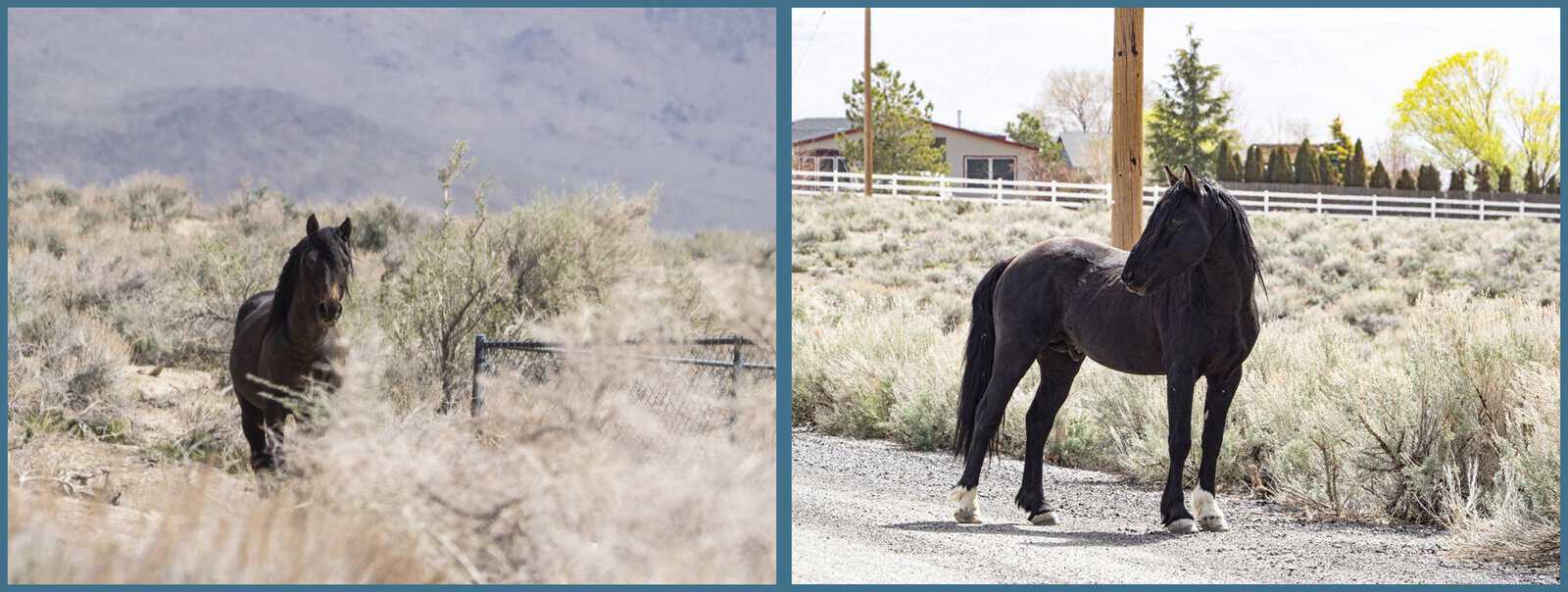
Figure 5: Left panel – exiled until he forms his own band. Right panel – stay away. [ghy]
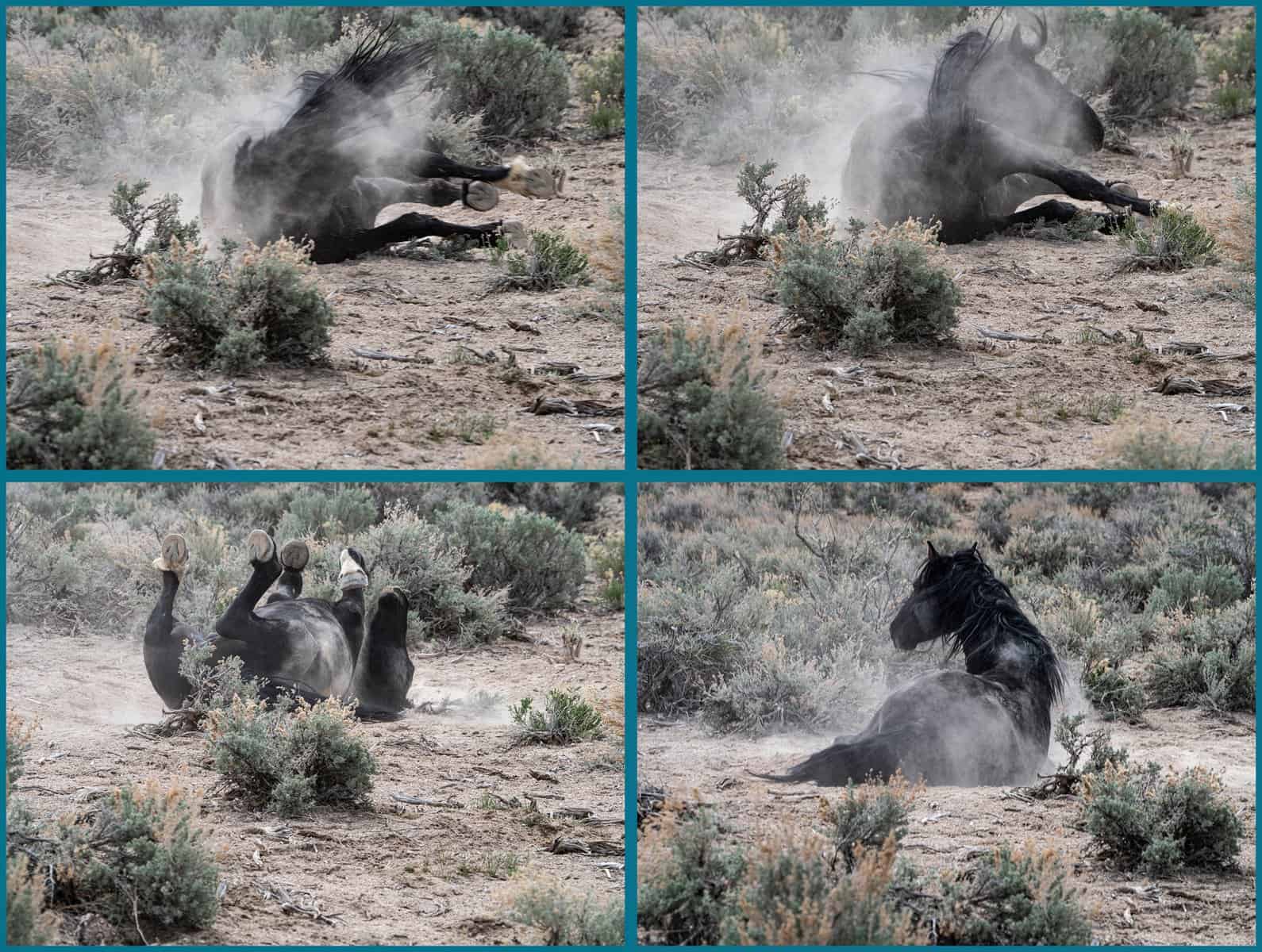
Figure 6: The stallion drops, rolls, and prepares to stand. [ghy]
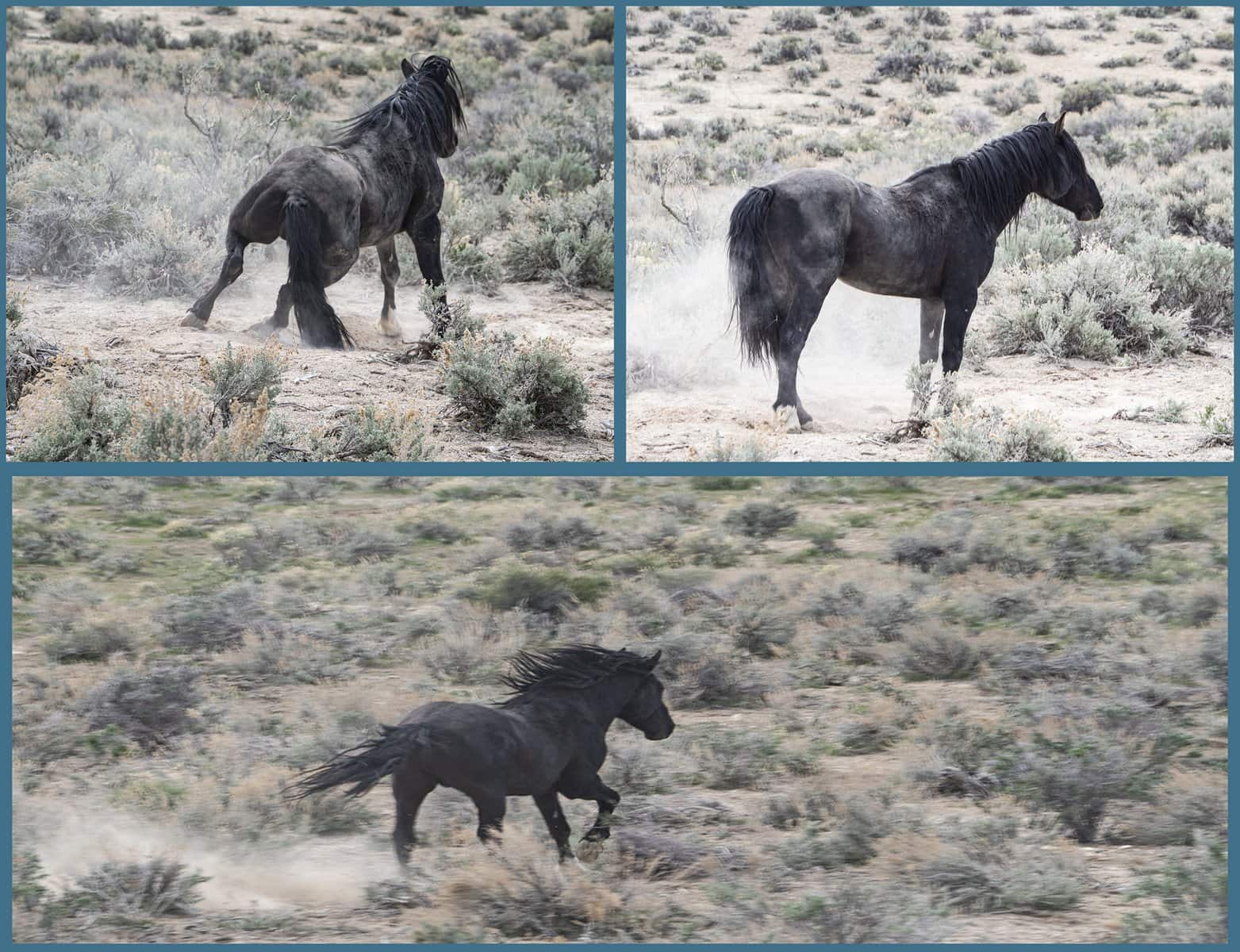
Figure 7: The stallion stands, shakes off the sand, and gallops across the field. [ghy]
At Washoe Lake State Park we were fortunate to witness more wild horse behavior. A bachelor stallion decided to enhance his life, and attempted to capture mares from the local band. A large dark brown stallion came galloping up to the parking area, and did what he had to do to protect his band.

Figure 8: The fight lasted less than two minutes with much snorting and whinnying. [ghy]
Despite legal protection and public support, these horses still face many challenges. One major concern is the rapid horse population growth, which can lead to overgrazing and damage to the range. Another is the risk of collisions between horses and vehicles on the roads within the range. There are significant high tech and industrial developments along Hwy 439 (a.k.a. The USA Parkway). Tesla, Google, and Microsoft have facilities under construction or planned. These will affect local herd behavior, but in an area small compared to the overall size of the Virginia Range.
The Wild Horses of the Virginia Range have a long and rich history, and they attract visitors from all over the world. They are a beautiful sight, and are thought of by many as a symbol of American heritage. For additional information: The Wild Horse Preservation League and the Virginia Range Wildlife Protection Association are volunteer non-profit organizations dedicated to keeping Nevada’s mustangs and burros wild and free.
What’s New in August
Interested in previous issues? Go to the News & Views page or the Arts & Info page. Scroll to the bottom of the page. In the center is a “Load More” link. Click this to display past articles.
NEWS & VIEWS
HAPPY THIRD!!!, from the Complement Staff
High Heat Hazards, by Bob Buddemeier
A Fairy God-daughter Story: Scholarship Money has Changed my Life, by Catherine Venegas-Garcia (transmitted by Joni Johnson)
Satisfaction, by Bob Buddemeier
ARTS & INFO
ESSAY: The Theremin and the Birth of Electronic Music, by George Yates
Word Play: Idioms, contributed by Connie Kent
August in the Library: The Reruns Continue, by Anne Newins
What to Wear in Oregon, by Robert Mumby
Nit Wit Newz – August 2023, by A. Looney
Events & Opportunities
Classes, Games and Parties, submitted by Sarah Karnatz
Concerts and Performances August – October 2023, submitted by Mary Jane Morrison
in Big, Borrowed, or Both
3550: the Portland Mirabella quarterly magazine (most recent issue) Click Here
Mirabella Monthly, Newsletter of the Seattle Mirabella (July-August issue) Click Here
— note for the Bird Nerds — there’s a crow story in this issue
PREPARE
Please see the August issue of hillTopics, which contains much information on emergency preparedness and responses
What’s New in July
Interested in previous issues? Go to the News & Views page or the Arts & Info page. Scroll to the bottom of the page. In the center is a “Load More” link. Click this to display past articles.
NEWS & VIEWS
Rode a Rad Rod, by a team of contributors
— a car show RETROspective
Bill Anderson: A Man Prepared for Emergencies, by Joni Johnson
— an electric car is just the beginning
RVM: Strategy and the Future, by Bob Buddemeier
— Next, the Tactical Plan
ARTS & INFO
Everyone in My Family Has Killed Someone, a book review by Bonnie Tollefson
The Word Nerd on the Letter ‘E’, submitted by Connie Kent
July in the Library, by Anne Newins
How Some of Our Animal Neighbors Deal with Extreme Heat, by Robert Mumby (pictures and text)
Events & Opportunities
Classes, Games and Parties, submitted by Sarah Karnatz
Concerts and Performances, submitted by Mary Jane Morrison
in Big, Borrowed, or Both
3550: the Portland Mirabella quarterly magazine (most recent issue) Click Here
Mirabella Monthly, Newsletter of the Seattle Mirabella (July-August issue) Click Here
— note for the Bird Nerds — there’s a crow story in this issue
PREPARE
Notice: The contents of the RPG Manual on the Prepare page are being transferred to MyRVM by Vicki Gorrell. This will be the home of additions or modification to RPG and preparedness information. We will announce when the new site is ready for public review and use.
What’s New in June
Interested in previous issues? Go to the News & Views page or the Arts & Info page. Scroll to the bottom of the page. In the center is a “Load More” link. Click this to display past articles.
NEWS & VIEWS
The Evening Turkey Show, by Robert Mumby
The Virginia Range Wild Horses, by George Yates
Bemused Birding, by Bob Buddemeier
Veterans’ Honor Walk, a photo collage by Reina Lopez
ARTS & INFO
The Wager – Book Review, by Anne Newins
The Word Nerd on Puns and Noodles, by Tom Conger
June in the Library, by Anne Newins
Events & Opportunities
Concerts and Performances, submitted by Mary Jane Morrison
Classes, Games and Parties, submitted by Sarah Karnatz
in Big, Borrowed, or Both
3550: the Portland Mirabella quarterly magazine (most recent issue) Click Here
Mirabella Monthly, Newsletter of the Seattle Mirabella (June issue) Click Here
PREPARE
Notice: The contents of the RPG Manual on the Prepare page are being transferred to MyRVM by Vicki Gorrell. This will be the home of additions or modification to RPG and preparedness information. We will announce when the new site is ready for public review and use.


